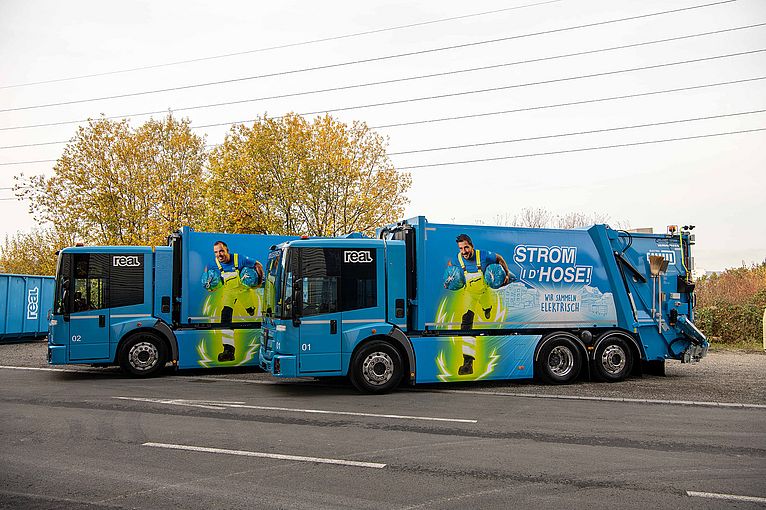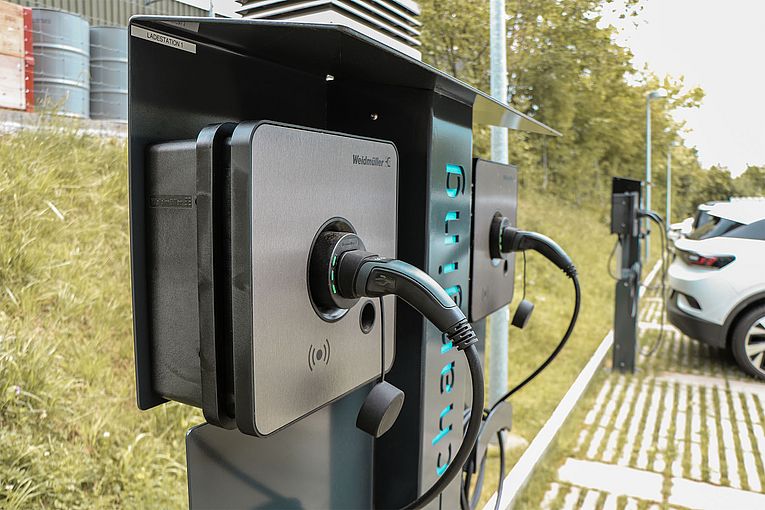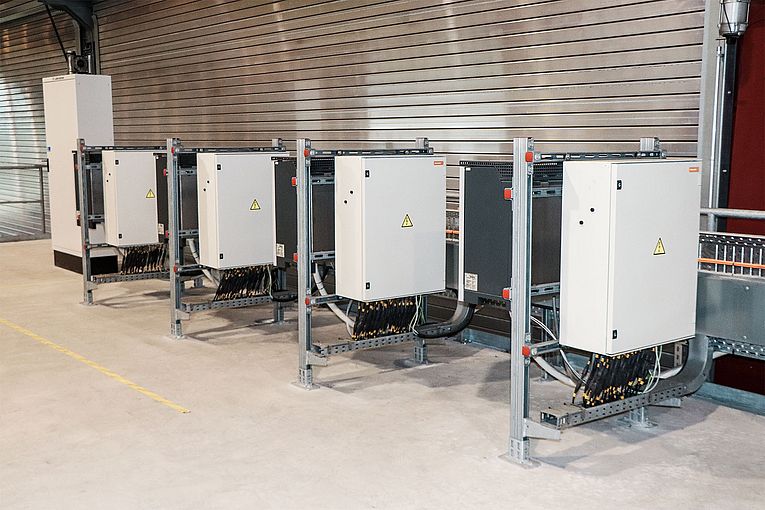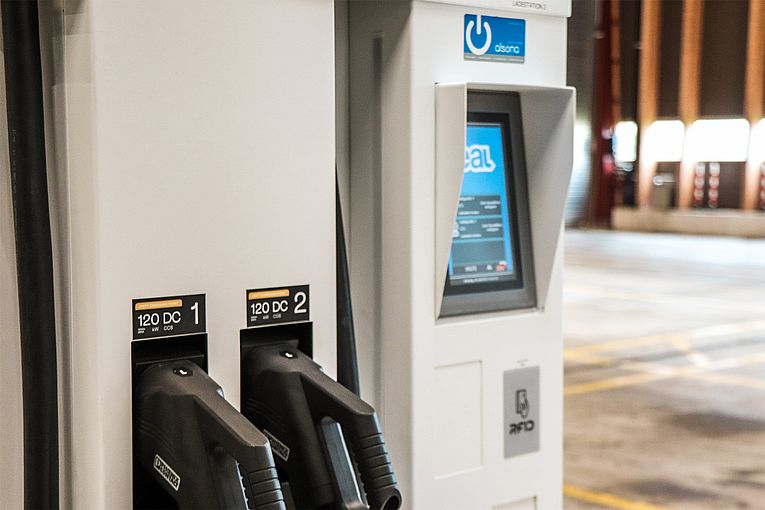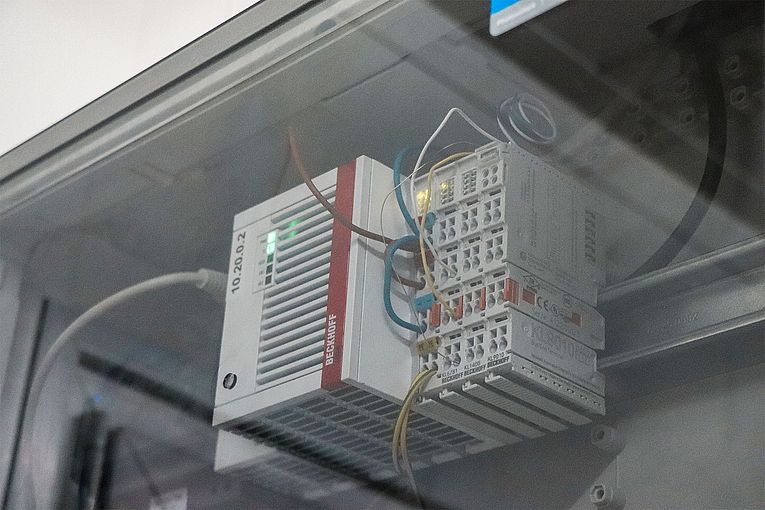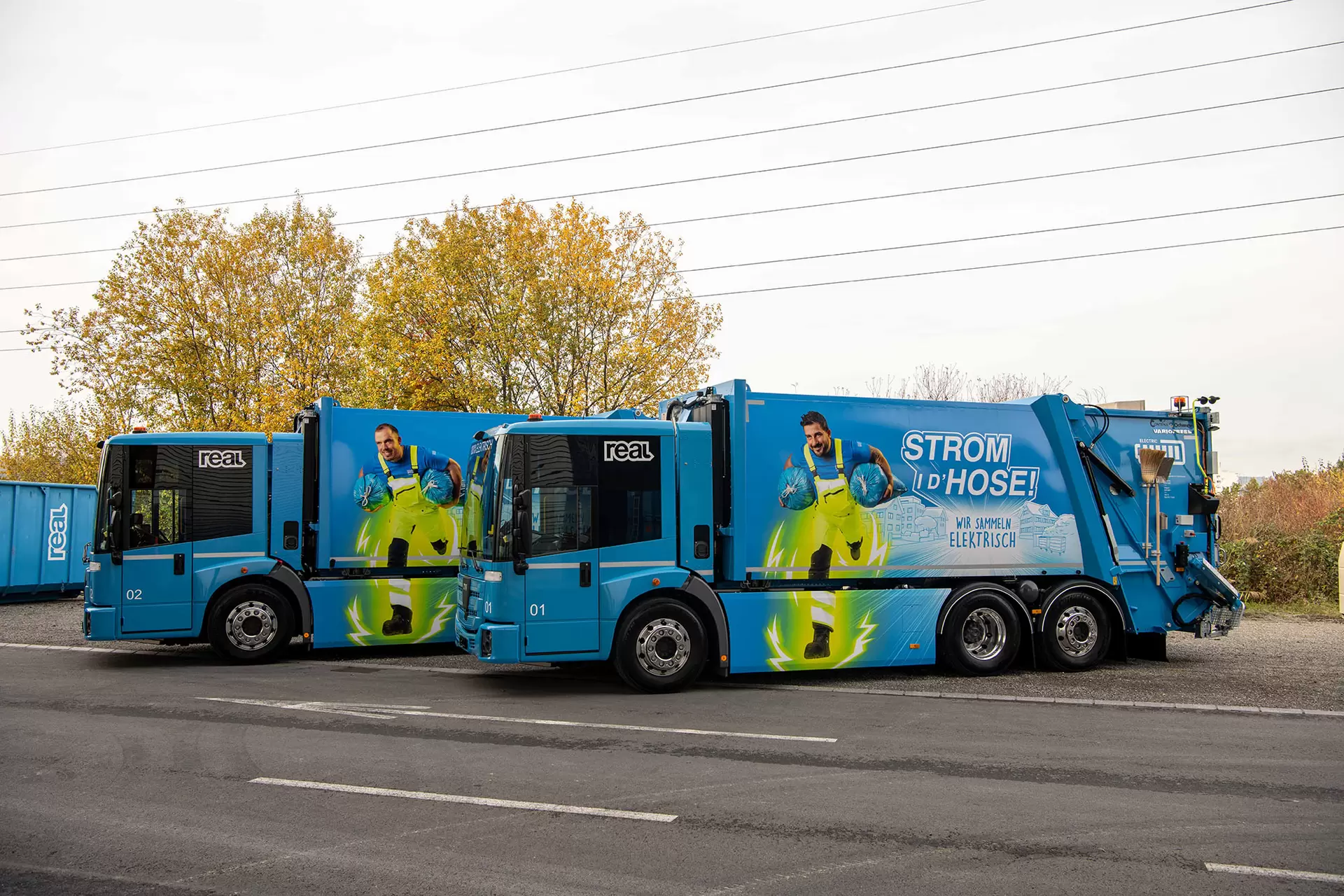REAL
Recycling Disposal Wastewater Lucerne
Since the beginning of 2023, the REAL Association of Municipalities has provided Central Switzerland's largest electric waste collection fleet. It takes more than just electricity to operate. Because the supply mandate has a clear priority, the focus is on proper charging and load management. Its location may not be traffic-calmed, but it is central, on the pulse of Lucerne: the Ibach recycling centre in Emmenbrücke. There, right next to the busy entrance and exit of the A2 motorway, the Lucerne Association of Municipalities for Recycling and Waste Water Disposal (REAL) has its headquarters.
6020 Emmenbrücke
(Switzerland)
Association of Municipalities
System relevant for hundreds of thousands
The association includes 22 municipalities from the Lucerne region and Aargau. Its services benefit more than 230,000 people, around 110,000 households, and thousands of businesses. REAL operates eleven eco-farms, a hundred neighbourhood collection points, and two wastewater treatment plants. In addition, the association of municipalities is the anchor shareholder of the Renergia waste incineration plant in Perlen.
This means that REAL is considered systemically crucial regarding disposal safety in the region. The Association of Municipalities has a role model and pioneering role that has an impact far beyond the catchment area. Following constructing the highly efficient Renergia incineration plant and eliminating nitrous oxide at the sewage sludge incineration plant in Emmen, he is expanding his commitment to climate protection in waste collection.
Central Switzerland, with one of the largest e-truck fleets
At the beginning of 2023, REAL added seven electric trucks to its vehicle fleet. The waste disposal contract also makes REAL a logistics provider with 14 refuse collection vehicles fleet. In addition, there is a hook device for skips and replacement trips and a semi-trailer truck for glass collection. Two electric cars are used for assembly and service trips. This is an essential step towards reducing greenhouse gas emissions.
Plans are also underway to procure replacements for seven additional diesel vehicles. It is already clear that their powertrain will be an alternative one. «We and the drivers will receive electromobility. Regarding waste logistics, we believe that alternative forms of propulsion are forward-looking,» says Ueli von Moos, a trained electrical engineer and waste management operations manager at REAL. The current electric collection fleet comes from Designwerk Technologies from Winterthur. The vehicle base is the Econic from Mercedes-Benz with low cab entry and a total battery capacity of 450-kilowatt hours.
Garbage collection needs a power supply
Recycling logistics is virtually predestined for electrification, as the vehicles are emission-free in residential areas. REAL's diesel vehicles consume an average of 65 litres of diesel per 100 kilometres in collective operation. If this consumption value is converted based on the calorific value per litre of diesel of 9.676-kilowatt hours, it corresponds to 628.94 kilowatt hours. The value of the electric trucks is only about 220 kilowatt hours. However, it is more than just the more efficient drive system that protects the environment and people. In stop-and-go operation, the e-trucks also significantly relieve residential areas of noise emissions due to low-noise starting and braking. This is an aspect that is widely accepted by the population.
Nevertheless, the electrification of recycling logistics has its challenges. The REAL trucks' tours are between 80 and 150 kilometres long. The battery capacity is enough for two short day trips or one long one. Therefore, a well-thought-out operating and charging concept is essential for these and other truck and car fleets.
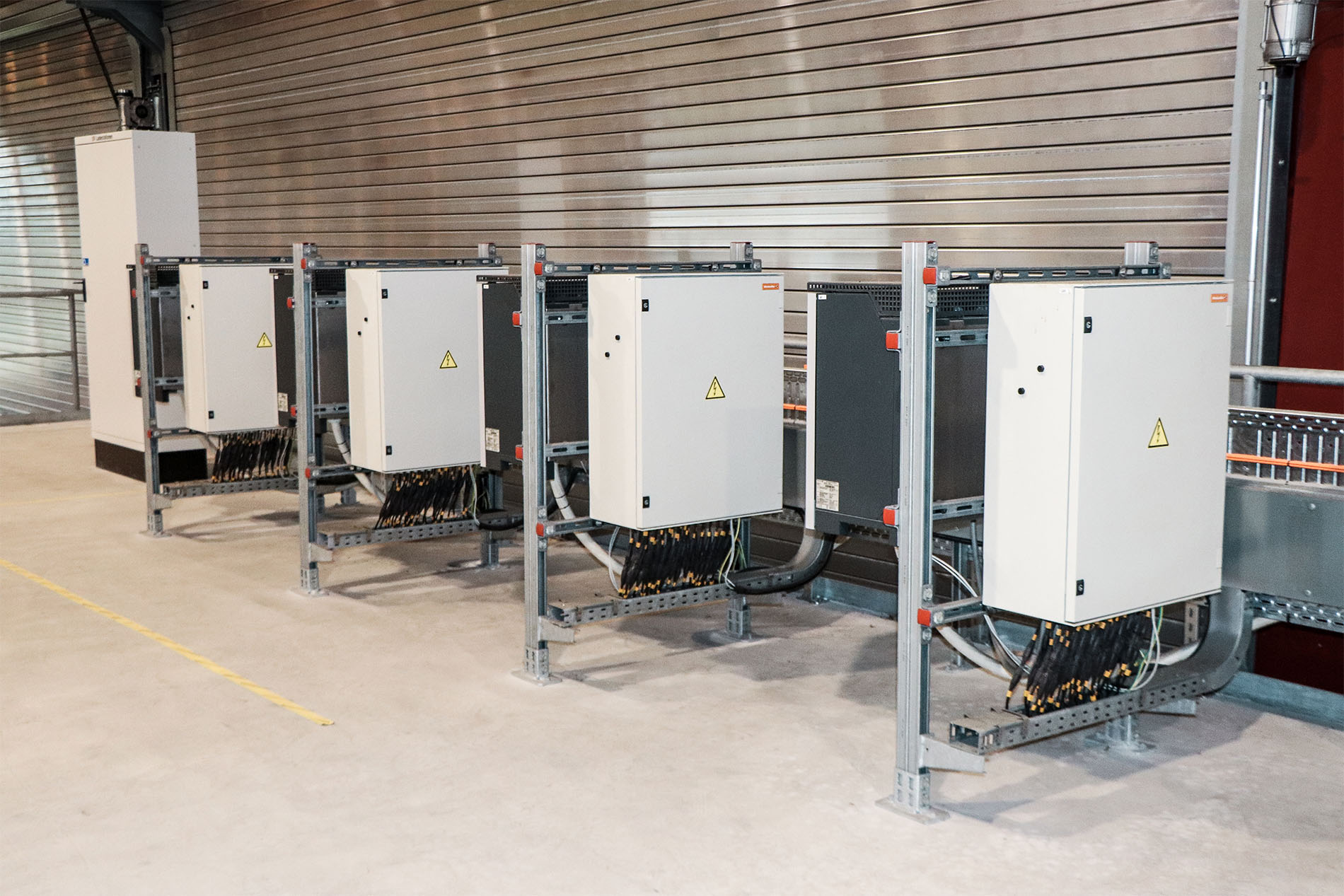
Vehicles at the charging point
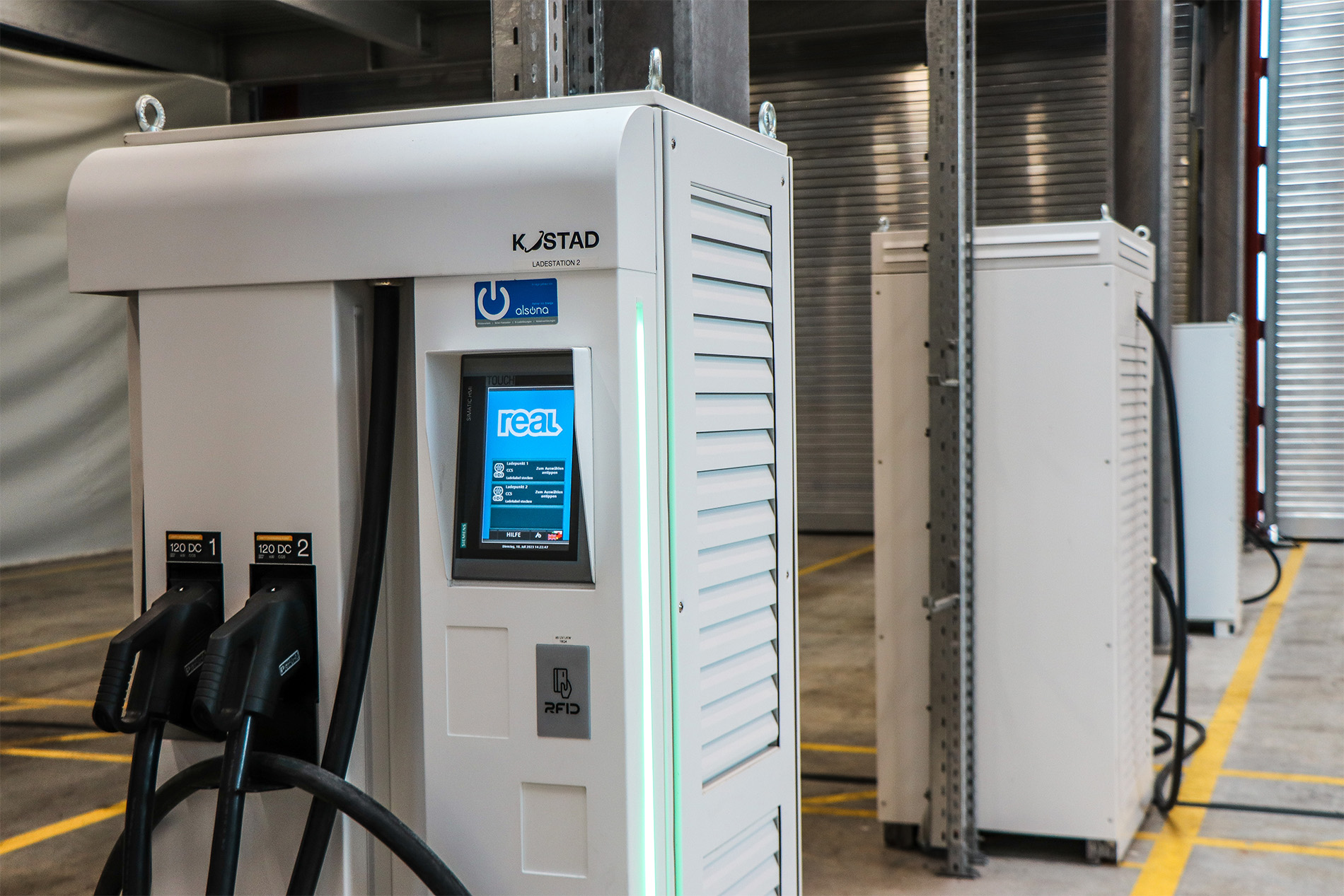
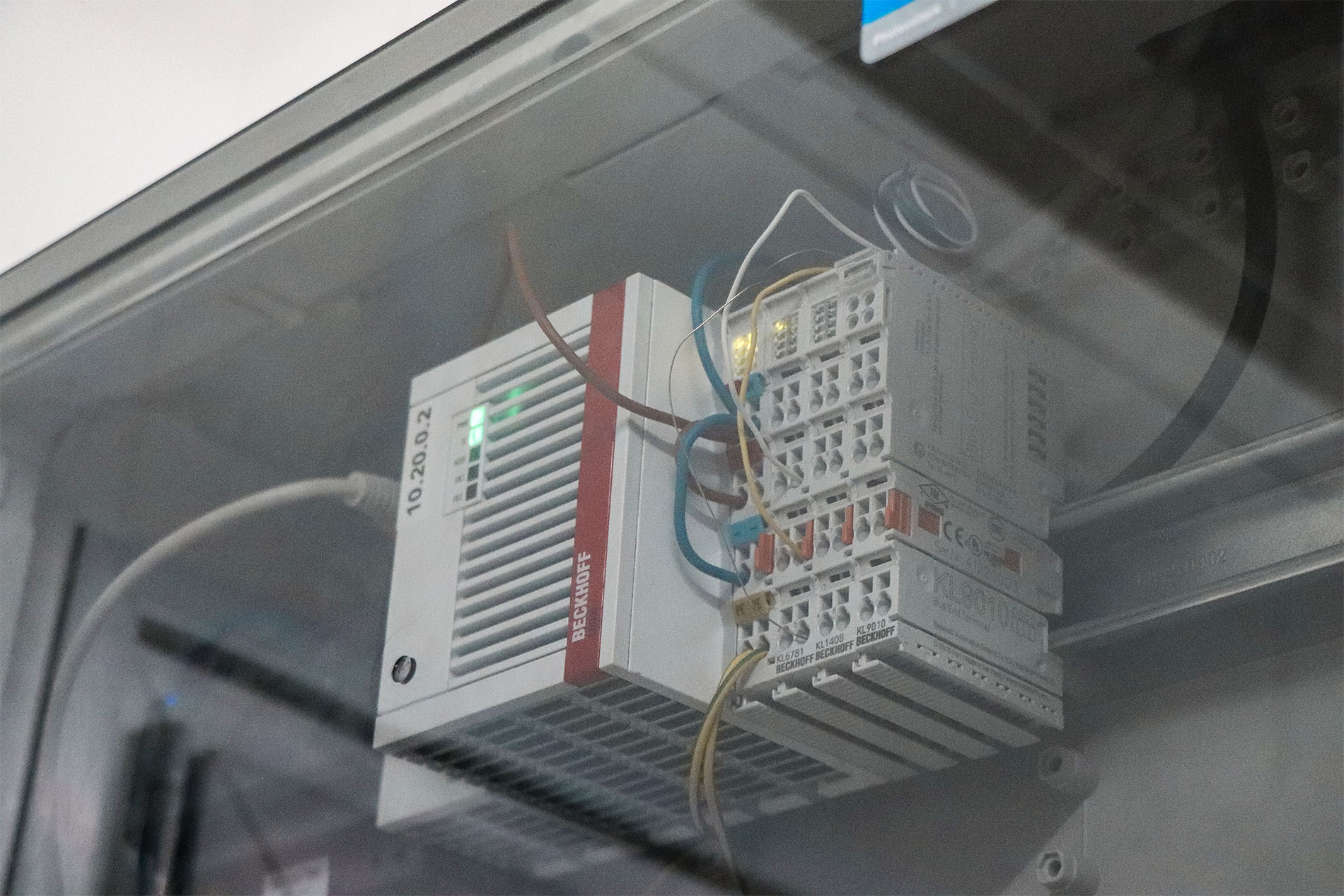
The recycling centre and the vehicle depot have a 315 amp mains connection. The PV system on the roof delivers up to 450 kilowatts peak. This could, for example, be used to charge 40 cars simultaneously with up to 11 kilowatts. The sweeping tours usually start at 07:00 and are planned so the vehicles arrive at the depot after a tour with a little less than 50% of the battery charge level. Since the routes are often long, the vehicle crew usually only spends their lunch break on the REAL premises. As a result, the trucks cannot be charged when the PV system usually has the best conditions for electricity production.
This means that the electricity supply to the grid must be managed ideally to avoid peak loads, for which the energy supplier has to charge high fees. However, optimal charging times are also considered through cheaper night-time tariffs to make cost-benefit efficiency ideal. However, REAL relies on more than e-vehicles for waste disposal operations. Employees also manage their commute to work partly electrically. In the office building with its 80-ampere house connection, four 11-kilowatt AC charging stations are available in the current expansion stage. Due to the long idle times of the vehicles during the employees' working hours, this charging power is sufficient. Since the installed systems are all scalable, it is possible to expand it later for any additional parking space that still needs to be electrified.
A charging park with redundancy
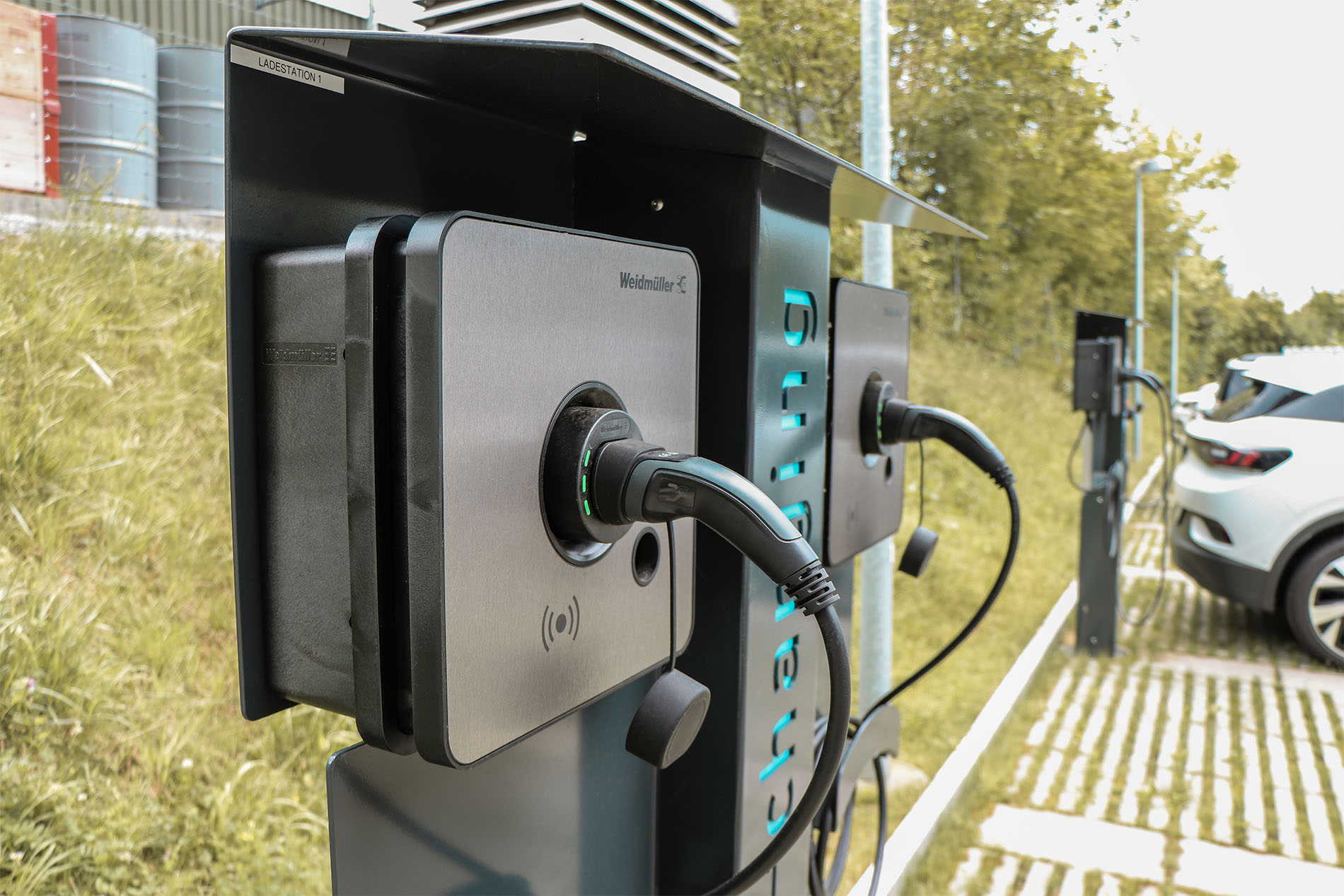
For the charging of the cars, AC charging stations from the manufacturer have been chosen, Weidmüller decided. In the truck depot, REAL relies on three DC charging stations, each with two charging points from Kostad. Here, too, the decisive factor for the choice of provider was the convincing price-performance ratio. The operational concept envisages vehicles being charged with up to 180 kilowatts of DC in emergencies, for example, to be ready for use at short notice after a nightly charging interruption. Mobile AC chargers are available for external use. In addition, the association also has a 44-kilowatt mobile DC charger from the truck manufacturer to ensure maximum operational capability.
Charging management is open and flexible
A charging and load management system controls the four AC charging stations and the charging stations in the truck depot. Such systems can combine three functions: reducing the total charging power, shifting the time of the power consumption, and prioritizing the charging processes. To achieve this, REAL relies on the ecoChargingCoach, a charging management system of the ecocoach AG from wells. This is related to Kostad, Weidmüller, and other providers.
«IN MOST CASES, THEY ARE GEARED TOWARDS SPECIFIC MANUFACTURERS, PERFORMANCE CLASSES OR INTERFACES,» REPORTS VON MOOS: «OPENNESS, SCALABILITY AND DYNAMISM ARE CRUCIAL FOR FLEET OPERATIONS OF OUR SIZE.»
He is very familiar with this field because even before his time at REAL, he worked as a construction manager and later as a project manager in renewable energies and electromobility. In the case of static systems, the maximum permissible total charging power is fixed. Dynamic charging management, on the other hand, is more complex but more flexible. Limiting the supply considers the current electricity demand and the current electricity supply. The latter includes the available electricity from PV systems and, for example, the company's battery storage system, as well as time- and volume-controlled tariffs from the grid. Ecocoach has mastered this profession, as the company also offers the charging management system as a complete energy management solution, including building automation.
Don't underestimate interpreting
Other success factors in the provision of the infrastructure are the areas of design, planning and installation. BE Netz AG initially developed electrical engineering, and the PV system is planned to be replaced by the Centralschweizerische Kraftwerke AG (CKW). The buildings were designed to integrate storage and charging technology from the outset. For architects and investors, it seems worthwhile to refer to the SIA 2060 leaflet and dimension grid connections in a future-proof way. After the acquisition of the fleet, REAL had to retrofit bus meters in particular. Alsona has planned the charging system. Elektro Schmidiger carried out the work. The entire charging infrastructure project took around five months after the obligatory tenders. The work from the distributor, the cable tray to the charging station, was carried out flawlessly, according to Moos's operations manager.
Expansion is already being planned
Even before the last diesel lorries are replaced, REAL is tackling the next expansion stage. In future, electricity storage systems will ensure that the company's own PV electricity is utilised optimally. The level of self-sufficiency is already around 50 per cent today and is set to rise to around 80 per cent with a battery storage system planned for the future. The association also wants to provide balancing power for the grid operator if required. The association's top priority is the security of supply. «This is just as guaranteed with electric vehicles as with diesel vehicles. After all, the petrol pumps don't work without electricity either,» emphasises von Moos.
Last, new charging stations are also being considered directly at KVA Renergia, an energy producer. The electricity produced there is considered C02-neutral, as the waste heat contains no primary energy. Moreover, the refuse collection vehicles drive to the site every day anyway.
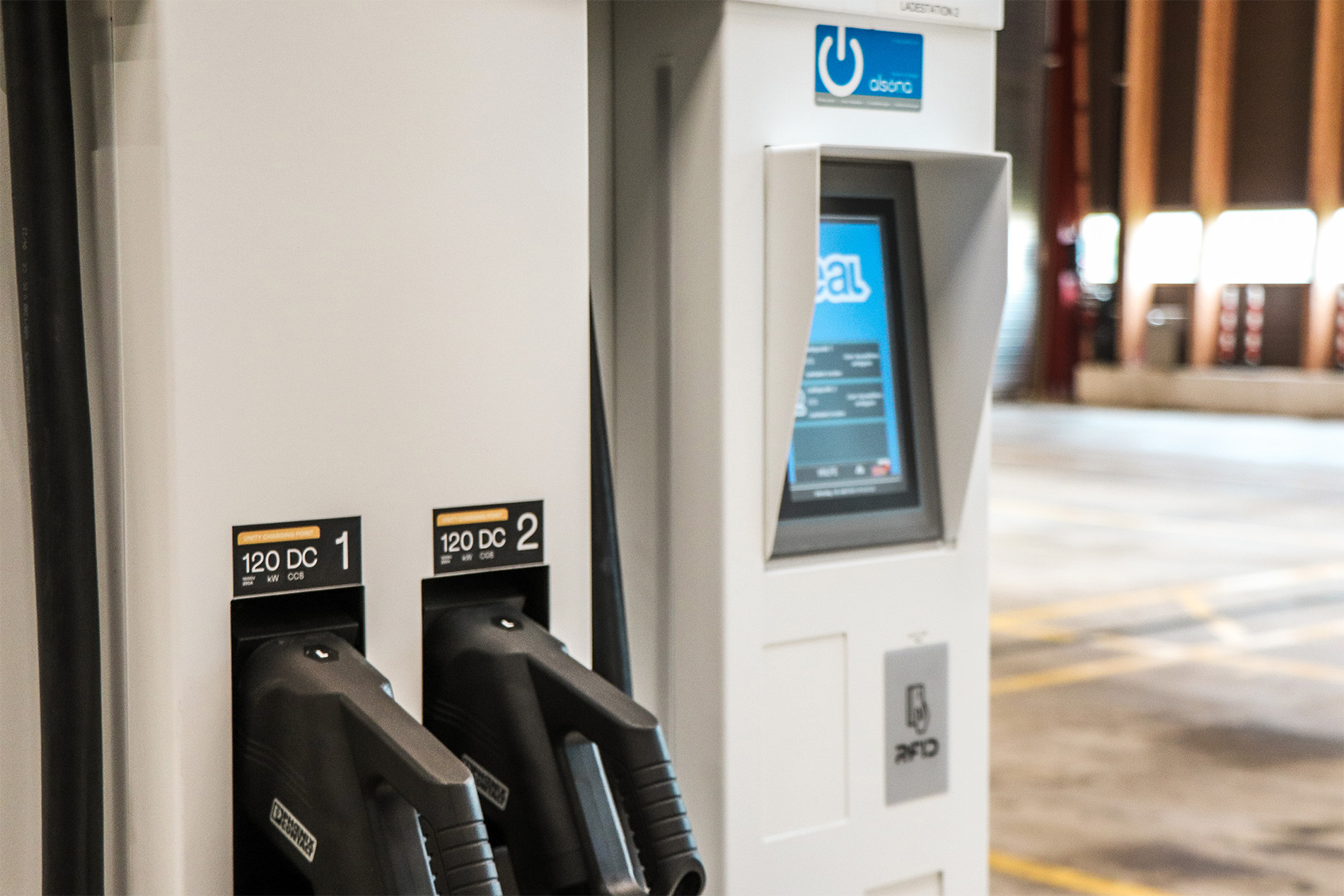
A holistic approach is crucial
Based on von Moos' findings from the project, planning is crucial. It's about more than the maximum charging current for cars and trucks. The trick is to look at energy and building technology and optimally network the technologies used. This requires holistic thinking on the part of suppliers and dynamic charging and load management.
At the same time, it is advisable to involve all stakeholders – from accounting to scheduling and drivers – early. As a result, many challenges can be considered suitable from the start or later incorporated as optimization. As a small example, activating the charging stations with a chip on the key ring instead of via app can be mentioned here - in some cases, simple things are more practical in everyday life. Because one thing seems clear: electric vehicles and infrastructure issues are here to stay.

Are you interested in a guided tour on site?
Then contact us today to arrange a viewing appointment with an ecocoach specialist.
